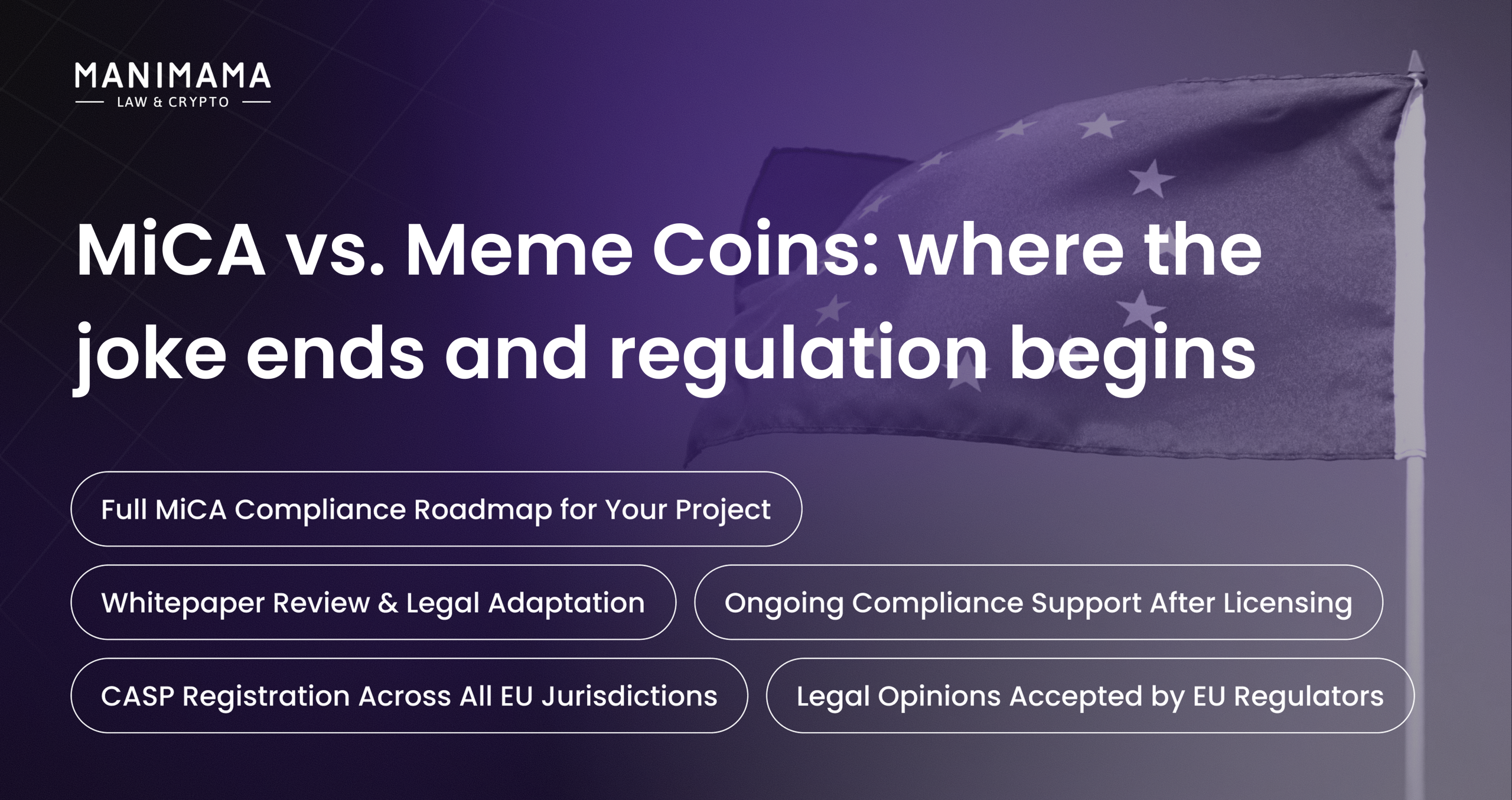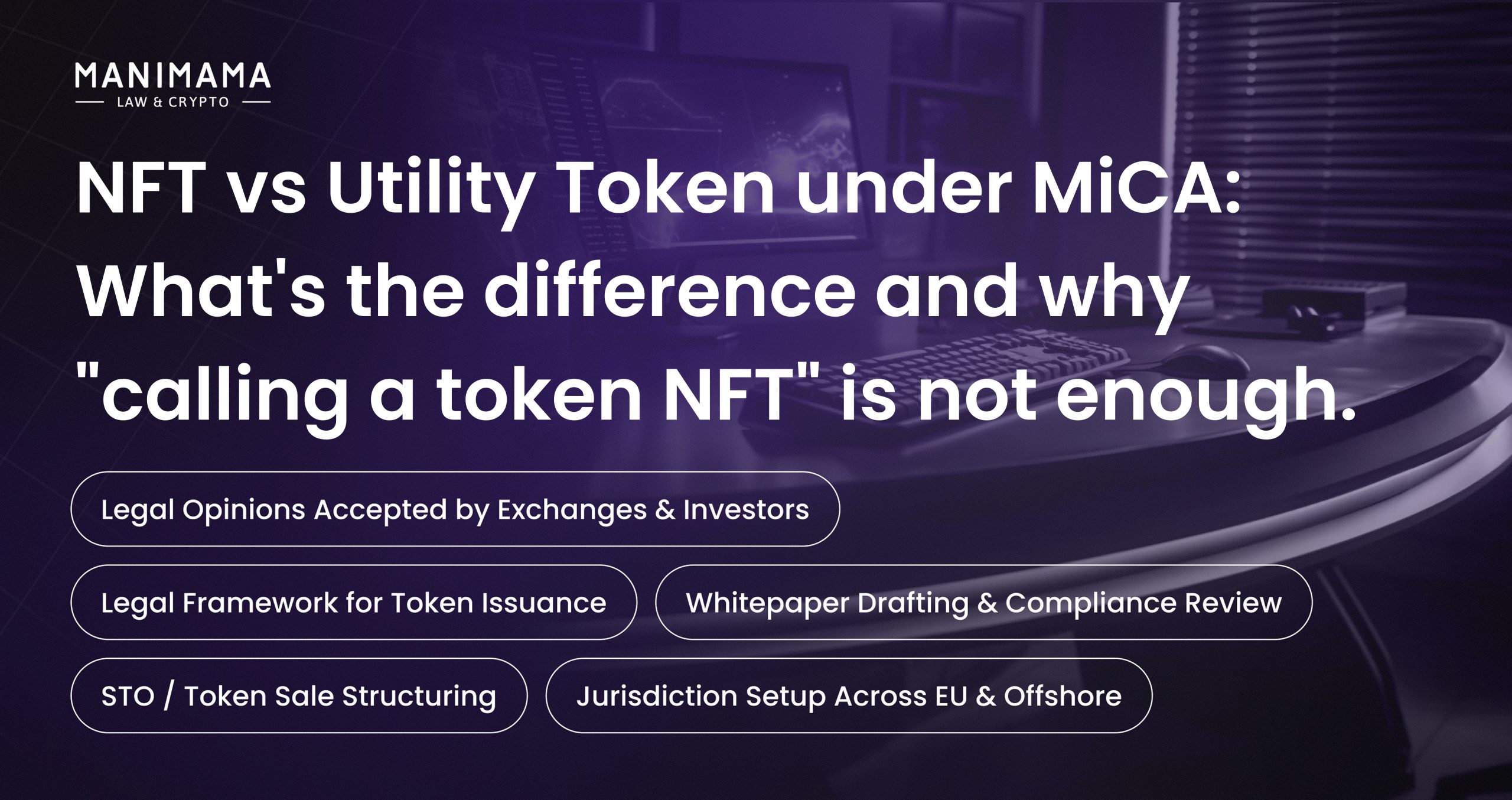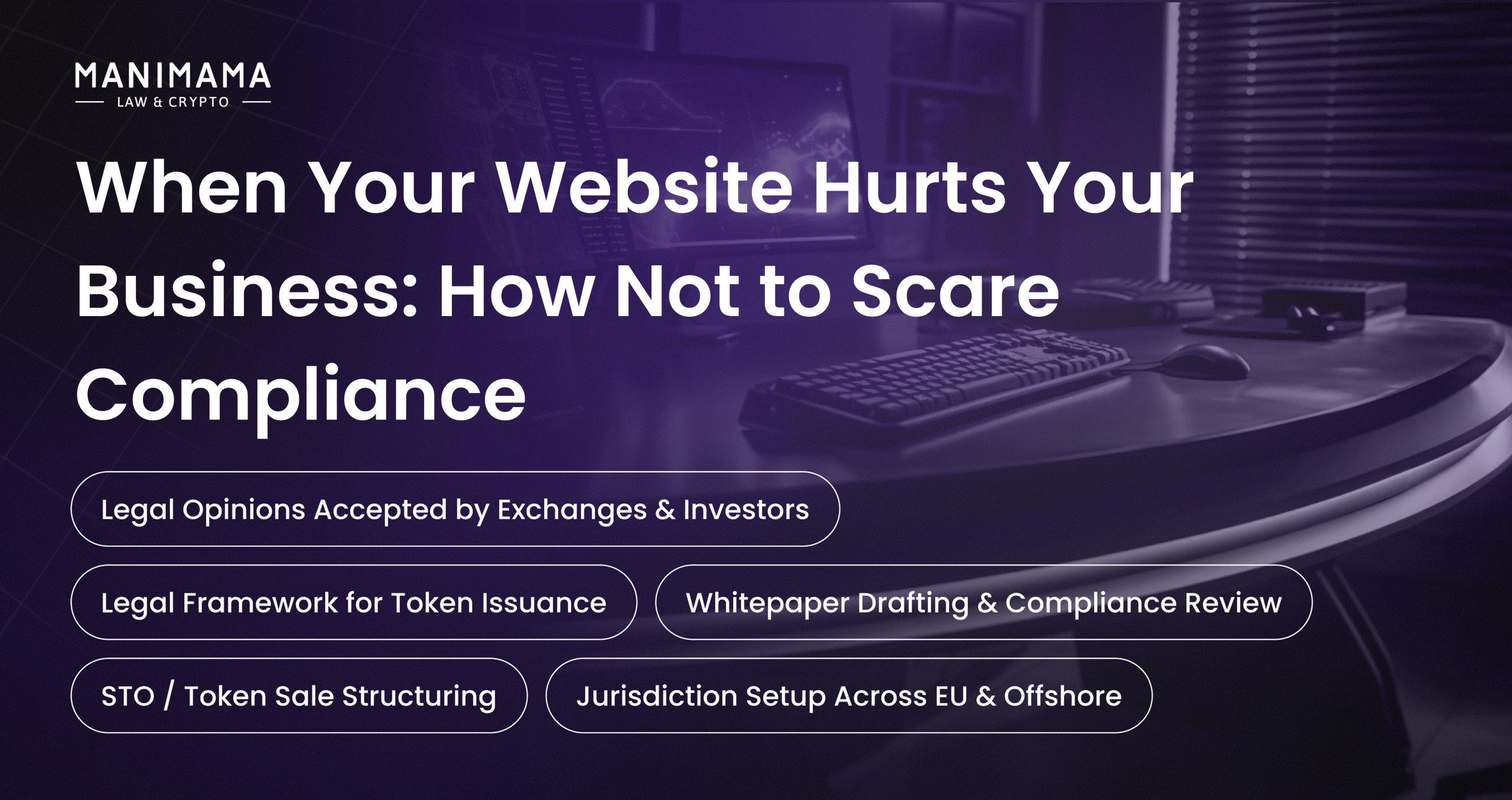Introduction
Meme coins—assets born of internet humor, viral culture, and spontaneous online communities — have rapidly evolved into one of the most volatile and unpredictable segments of the crypto-asset market. Tokens such as DOGE, SHIB, PEPE and BONK move not based on intrinsic value but on social-media momentum, influencer activity, and collective sentiment. Some have surged by thousands of percent within days, while others have collapsed as quickly as they appeared.
The adoption of Regulation (EU) 2023/1114 on Markets in Crypto-Assets (MiCA) has significantly impacted the crypto-asset market, particularly meme coins. MiCA, the first major jurisdiction to introduce harmonised, legally binding rules for the entire crypto-asset ecosystem, has established unified requirements for token issuers, public offerings, marketing communications, and market conduct. This has created a new regulatory baseline of transparency, fairness, and consumer protection across the EU, including for assets that originated as jokes or cultural artifacts.
Under MiCA, even a purely meme-driven token may trigger obligations to publish disclosures, avoid misleading promotions, and comply with rules on market integrity. This means that the ‘joke’ of meme coins ends the moment they involve fundraising, coordinated promotion, or expectations of value, as they become regulated products.
How does MiCA regulate meme coins?
MiCA does not treat meme coins as a special category; however, they fall squarely within its scope the moment there is a public offer, a defined issuer, or trading on a regulated CASP. In practice, this places most meme-coin launches and admissions to trading under MiCA’s general regime for “crypto-assets other than ARTs and EMTs.”
Under Title II of the MiCA, meme coin creators offering tokens to the public must publish a crypto-asset whitepaper, provide fair and non-misleading disclosures, and ensure that any marketing is consistent with the information provided to investors. This means that even community-driven or “for fun” tokens become regulated once they involve fundraising, coordinated promotion, or expectations of value.
These provisions do not apply to offers to the public of crypto-assets other than asset-referenced tokens or e-money tokens where any of the following apply: the crypto-asset is offered for free, the crypto-asset is automatically created as a reward for the maintenance of the distributed ledger or the validation of transactions, the offer concerns a utility token providing access to a good or service that exists or is in operation, the holder of the crypto-asset has the right to use it only in exchange for goods and services in a limited network of merchants with contractual arrangements with the offeror.
MiCA also affects the admission of tokens to trading venues operated by CASPs. CASPs must perform due diligence before admitting any token to trading, assessing risks, issuer transparency, and potential for market manipulation. This makes meme coins subject to the same market integrity and market-abuse rules as all other crypto-assets, limiting practices such as coordinated pump-and-dump campaigns or influencer-driven hype.
In essence, MiCA regulates meme coins not because of what they are, but because of how they are issued, promoted, and traded—turning even the most humorous token into a regulated product once it enters the EU market.
Regulatory trends affecting meme coins beyond MiCA
The rapid mainstreaming of meme coins has shifted them into the direct line of sight of global regulators. Supervisory authorities such as the European Securities and Markets Authority (ESMA) increasingly classify highly volatile tokens as potential vectors for market manipulation, deceptive promotions, and structurally high consumer-protection risks.
As a result, calls for stricter disclosure duties and clearer qualification tests for publicly offered digital assets have intensified, signalling that meme-coin issuers and intermediaries will no longer benefit from regulatory ambiguity.
This trend is reinforced by emerging ESMA and European Banking Authority (EBA) technical standards under MiCA, which further clarify expectations regarding market-abuse detection, risk assessments for speculative assets, and the consistency of marketing communications.
Digital Services Act (DSA)
Beyond financial supervision, the EU’s Digital Services Act (DSA) introduces an additional compliance layer particularly relevant for meme-coin dynamics, as much of their valuation depends on online virality and influencer-driven promotion.
Under the DSA, platforms must ensure transparency of advertising, implement safeguards against manipulative dissemination techniques, and mitigate systemic risks associated with the amplification of speculative financial content.
For meme coins whose trajectories are shaped by social-media sentiment, these rules serve as an indirect yet consequential constraint on hype-driven campaigns and opaque promotional activity.
Data-protection regulation
Data-protection regulation forms another layer of complexity. While blockchain protocols are inherently resistant to data modification or erasure, the surrounding infrastructure—exchanges, analytics providers, KYC vendors—routinely processes personal information.
Under the EU’s General Data Protection Regulation (GDPR), meme-coin ecosystems must ensure lawful processing of customer data, secure retention, and respect for user rights, including the rights of access and rectification.
Tensions between GDPR’s “right to be forgotten” and the immutability of distributed ledgers remain unresolved, placing additional compliance pressure on platforms that combine decentralised execution with centralised onboarding or analytics.
Moreover, recent guidance from the European Data Protection Board (EDPB) emphasises the need for clear legal bases for transaction analytics and wallet fingerprinting techniques, which are commonly used in meme-coin market surveillance.
Consumer-protection law
A further dimension arises from EU consumer-protection law, particularly the Unfair Commercial Practices Directive (UCPD). Hidden sponsorships, exaggerated value claims, and influencer promotions lacking disclosure may constitute misleading commercial practices, exposing both issuers and promoters to enforcement action.
This framework is increasingly relevant as meme-coin launches frequently rely on viral marketing strategies that blur the line between community engagement and commercial solicitation.
Collectively, these regulatory developments indicate that the governance perimeter for meme coins is rapidly expanding. Even tokens born as humorous experiments are becoming subject to a multilayered framework spanning financial regulation, AML/CFT standards, taxation, and privacy law.
As supervisory expectations increase, meme-coin issuers, market operators, and DeFi platforms will be required to integrate compliance-by-design principles into their operations, transforming what was once a purely viral phenomenon into a regulated component of the digital-asset market.
How meme coins became a laundering vector?
Because of their high volatility, anonymous issuance, and minimal governance, meme coins have become an unexpected focal point for global anti-money laundering (AML) and counter-terrorist financing (CFT) efforts.
Regulators such as the U.S. Treasury’s FinCEN have clarified that businesses that facilitate the transfer or trading of speculative tokens, including meme coins, may fall under existing AML/CFT obligations as money services businesses (MSBs) when transmitting or facilitating transactions in such tokens.
These expectations increasingly influence EU-based CASPs preparing for MiCA and the upcoming EU AML Regulation, which require risk-based controls for high-volatility and thin-liquidity assets.
Recent investigations reveal that meme coins are no longer used solely for pump-and-dump schemes or phishing campaigns. They are now emerging as direct laundering tools.
This trend highlights why meme-coin markets pose a unique AML risk. Anyone can mint a token in seconds with no identifiable issuer, liquidity pools can be manipulated to create the illusion of organic trading, and the absence of governance structures makes enforcement difficult.
For EU regulators, these characteristics place meme coins squarely within the category of high-risk crypto assets, requiring enhanced due diligence under MiCA-aligned AML frameworks and closer monitoring of trading behaviours associated with speculative tokens.
Conclusions
Meme coins may originate as cultural jokes, but once they enter the EU market, they activate a dense regulatory perimeter. MiCA, together with the AML package, DSA, GDPR, and consumer-protection rules, removes any illusion of informality by imposing structured obligations on issuers, intermediaries, and platforms.
As these regimes converge, meme-coin projects must shift from spontaneity to compliance-by-design, recognising that viral momentum no longer exempts them from legal accountability or regulatory scrutiny.
At Manimama Law Firm
At Manimama Law Firm, we help businesses navigate this new reality effectively. We prepare documentation, manage application processes, and develop long-term crypto compliance strategies.
Our Contacts
If you want to become our client or partner, feel free to contact us at support@manimama.eu.
Or use our telegram @ManimamaBot and we will respond to your inquiry.
We also invite you to visit our website: https://manimama.eu/.
Join our Telegram to receive news in a convenient way: Manimama Legal Channel.
The content of this article is intended to provide a general guide to the subject matter, not to be considered as a legal consultation.










